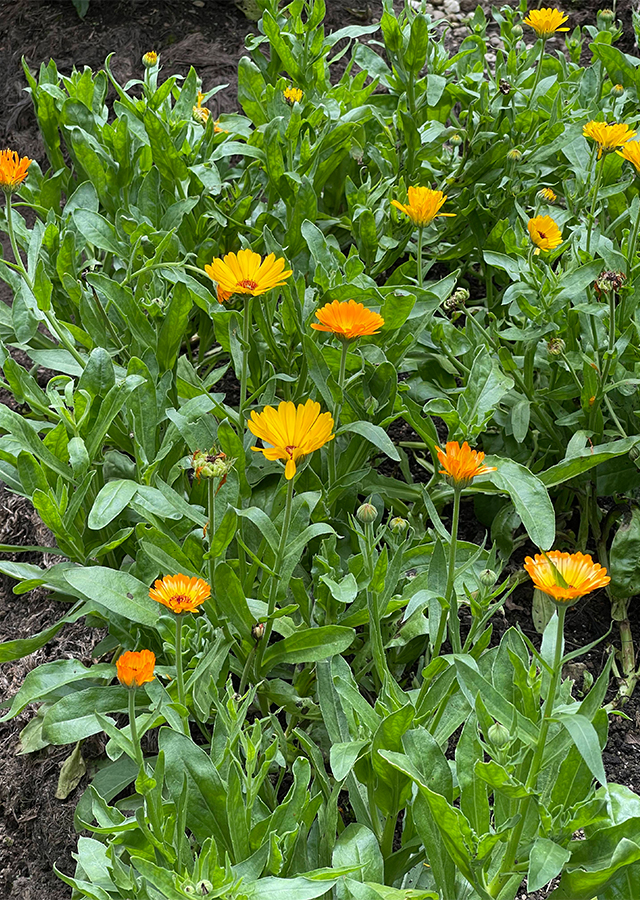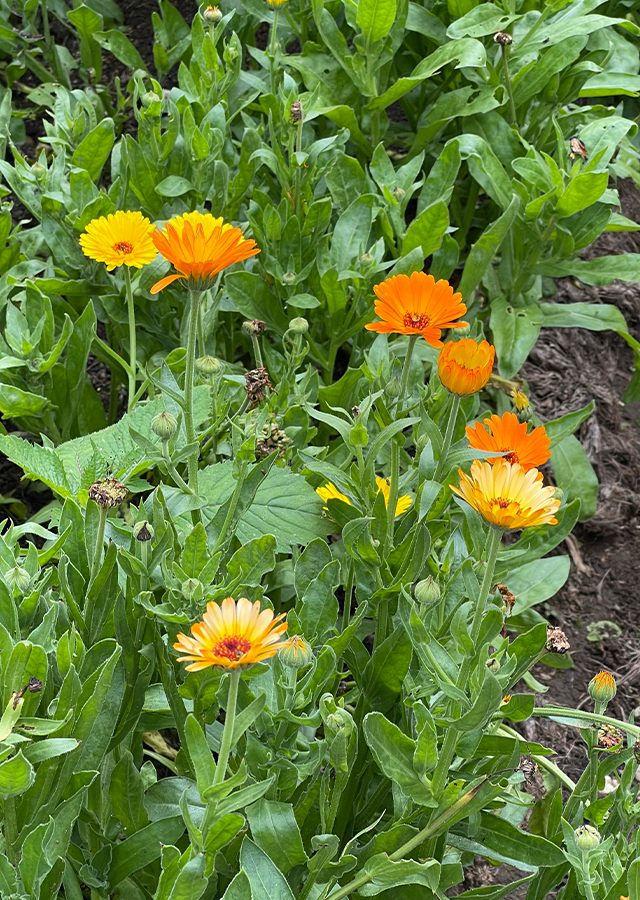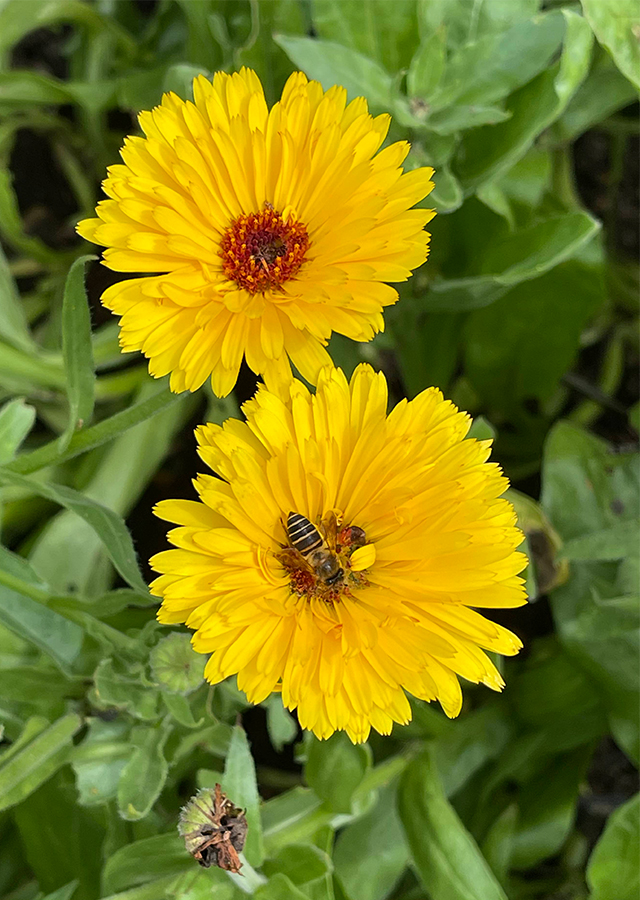Calendula
Calendula officinalis L.
Asteraceae
Location in our garden
Principal



Synonym
Caltha officinalis (L.) Moench
Calendula aurantiaca Kotschy ex Boiss.
Calendula eriocarpa DC.
Habitus
Herbaceous. An evergreen aromatic annual or biennial herbaceous plant that can grow 30-60 cm tall.
Part Used
Leaves
Flowers
Growing Requirements
Full Sunshine
Need Shade
Habitat
Terrestrial
Overview
Calendula officinalis is native to the Mediterranean countries. It has environmental uses, as animal food and a medicine and for food. Although the flowers and leaves are somewhat bitter tasting, they are edible and may be added fresh or dried to soups, salads or rice dishes for both color and flavor. Calendula is mainly used due to its various biological activities to treat various diseases and act as an analgesic, anti-diabetic, anti-ulcer and anti-inflammatory agent. It exerted many therapeutic effects including antibacterial, antifungal, anthelmintic, antiviral, antioxidant, hepatoprotective, cardioprotective and wound healing, and many other effects. Thus, Calendula products have been widely used for about 200 cosmetic formulations, i.e., in cosmetics like creams, lotions, shampoos due to the presence of compounds such as saponins, resins and essential oils.
Vernacular Names
Ringblomma (Swedish), Butterblume (German), Galbinele (Romanian), Ekhwan asfar (Arabic), Chin Chan Ts’ao (Chinese), Zergul (Hindi).
Agroecology
Easily grown in average, moderately fertile, well-drained soils in full sun. Plants generally appreciate some part afternoon shade in hot summer climates.
Morphology
- Stem - angular, hairy and solid.
- Leaves - aromatic, green, lower spatulate, 10-20 cm long and 1-4 cm wide; higher oblong and mucronate, 4-7 cm long.
- Flowers - bright yellow to deep orange in colour. Flowers are daisy-like flowerheads, corolla oblong spatulate, 15-25 mm long and about three mm wide; corolla of disc flowers rounded, at the very best tridentate, 1.5-2.5 cm long and 4-7 mm in diameter with 5 mm long tubular florets.
- Fruit - dry spiny achene fruit, golden brown, crescent shaped.
Cultivation
- Generatively propagated by seed.
- Start seed indoors 6-8 weeks before last frost date or sow directly in the garden just before last frost date
Chemical Constituents
Alkaloids, essential volatile oils, saponins, triterpenes, triterpenoids, esters (flavoxanthin and astaxanthin, etc), flavonoids (quercetin, isoquercetin, narcissin, rutin, etc), steroids, carotenoids, amino-acids (alanine, arginine, asparagine, valine, histidine, glutamic acid, leucine, and lysine, etc), and polysaccharides.
Traditional Medicinal Uses
- It is used as a cure for gastrointestinal disease, eye disease, skin injuries and cases of burn.
- In Europe, the leaves are used as resolvent and diaphoretic whereas the flowers are used as a stimulant, antispasmodic and emmenagogue.
- In England, the decoction of the flowers was used as a posset drink for the treatment of measles and smallpox, and therefore the fresh juice as a medicine for jaundice, costiveness (constipation) and suppression of menstrual flow.
- In India, the florets are utilized in ointments for treating wounds, herpes, ulcers, frostbite, skin damage, scars and blood purification. The leaves are used for treating varicose veins externally.
Part Used
Reference Sources
- Al-Snafi, A. E. (2015). THE CHEMICAL CONSTITUENTS AND PHARMACOLOGICAL EFFECTS OF CALENDULA OFFICINALIS - A REVIEW. Indian Journal of Pharmaceutical Science & Research, 5(3): 172-185.
- Kew Royal Botanic Gardens. (No date). Plants of The World Online: Calendula officinalis L. https://powo.science.kew.org/taxon/urn:lsid:ipni.org:names:187894-1. 13-12-2022.
- Missouri Botanical Garden. (No date).Calendula officinalis. https://www.missouribotanicalgarden.org/PlantFinder/PlantFinderDetails.aspx?taxonid=277409. 13-12-2022.
- National Park of Singapore. (2021). Flora Fauna Web: Calendula officinalis. https://www.nparks.gov.sg/florafaunaweb/flora/6/0/6036. 13-12-2022.
- Sharma, S., and Kumari, K. (2021). AN OVERVIEW ON CALENDULA OFFICINALIS LINN.: (POT MARIGOLD). Journal of Advanced Scientific Research. 12 (3) Suppl 2: 13-18.

